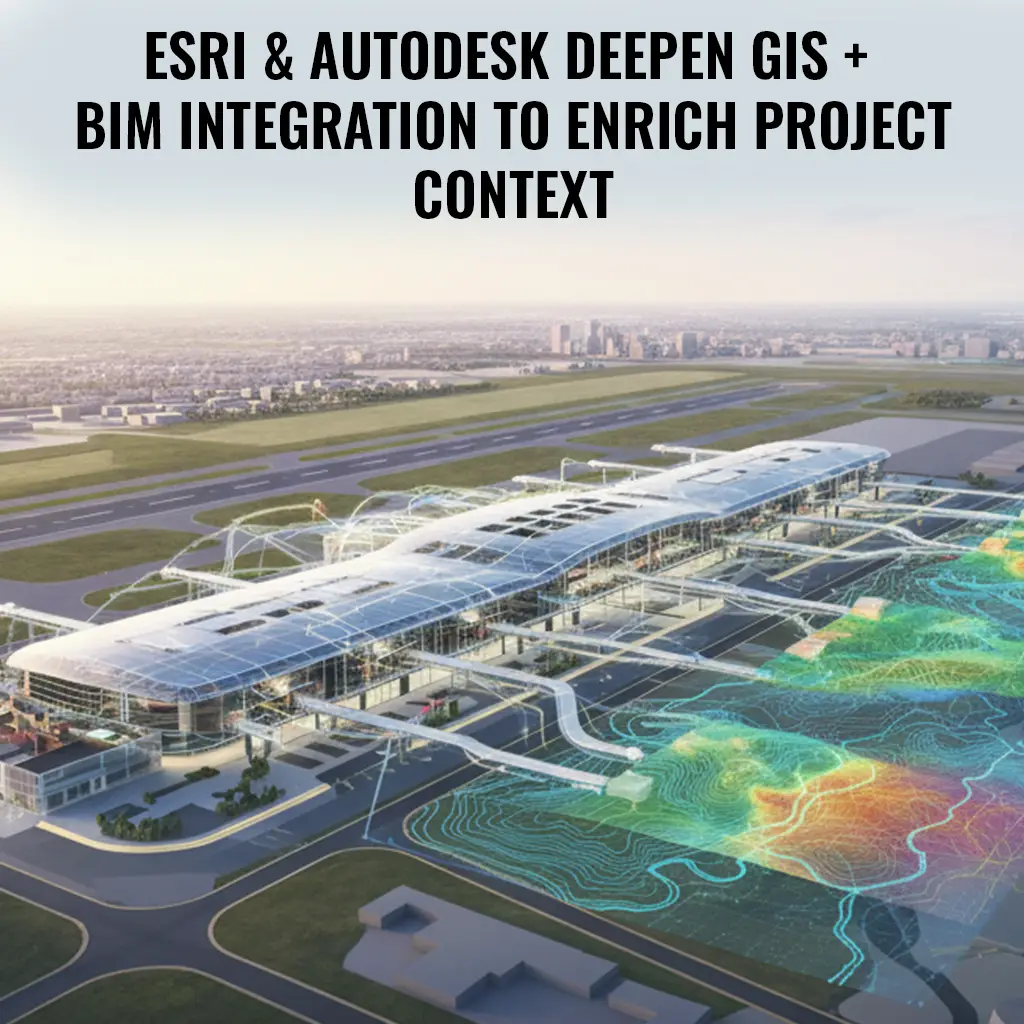Download Ready
Thanks for your interest! Your syllabus is now ready to download.

October 13, 2025
2 Min Read
At Autodesk University 2025, Esri showcased how tighter integration between GIS and BIM is unlocking new possibilities across planning, design, and operations.
Project teams can now inject GIS layers — such as soils, hydrology, demographics — early into BIM projects. This gives designers spatial context from the start, enabling smarter decisions about orientation, massing, and environmental constraints.
By connecting ArcGIS and Autodesk Construction Cloud / Forma, teams gain a unified view of geospatial and building data, enabling better collaboration across disciplines. Projects like airport modernization already use this to link facility maps, Revit models, and operational systems.
With this integration, BIM no longer lives in isolation — it becomes geospatially aware. That helps reduce silos, support lifecycle use of data, and push toward more intelligent, context-rich project delivery.